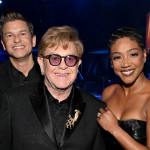There she was—Madonna!—dancing with orphans in the Southern African nation of Malawi. Up to 1 million children there are thought to have lost parents to AIDS, and many of the kids have the disease themselves. The conditions are so dire, Madonna told Time magazine, that she will donate at least $3 million to support orphans throughout the country. And then, right on cue, came the innuendos and carefully orchestrated denials. So what was Madonna denying this time? Not, say, that she and Lindsay Lohan had shared a suite at Nicky Hilton’s South Beach hotel. Nope: “[Madonna] has not adopted a child,” her longtime spokesperson, Liz Rosenberg, declared in early October, despite a Malawian official’s claim that “she asked us to identify boys only, which we have done after visiting four orphanages.” Rosenberg added, “I think anything that brings attention to the country is fine with her, even if it’s information that’s not correct.” The speculation, which played out on gossip pages around the world, mapped the latest intersection of AIDS and celebrity—a crossroads with its own very definite traffic patterns.
At a subsequent press conference, the Malawian government acknowledged the love Madonna could no longer deny: David Banda, then 13 months old. She had indeed adopted the child and later whisked him from the country. (His HIV status wasn’t disclosed.) The mother of reinvention also adopted yet another persona—African AIDS warrior. And she may have finally achieved global market saturation. “I didn’t know Madonna before she came to the orphanage,” said Anders Malikita, a 14-year-old there.
No sane person would dismiss Madonna’s African adventures as vogueish poses. Over her 23-year career, which parallels the arc of the AIDS epidemic, she has been a relentless advocate at home and abroad. But now that Oprah, Angelina and Alicia are African queens, is there any room left on the veldt?
The pop culture bibles—the New York Times Sunday Styles section, for one—tell us that Africa is both hot and cool, the ideal destination for budding goodwill ambassadors or image rehabs. (Mel Gibson, please report to Gate 23 for immediate departure.) Yet they haven’t noticed how inevitable, given AIDS’ ever-evolving domestic image, the exodus was.
Many of the first AIDS “celebrities”—Rock Hudson, Rudolf Nureyev—were already famous, albeit with bodies whose telltale symptoms betrayed their HIV status. The next celeb crop rose amid the doom and gloom of the red-ribbon era, when AIDS inspired art and created personalities—Angels in America, Philadelphia, Pedro Zamora of MTV’s The Real World.
The most recent celebrity phase—Mary J. Blige, Ashley Judd—coincides with the HAART era, when AIDS became “manageable.” Meanwhile, a political agenda equating domestic AIDS with “problem populations” directed our attention overseas. So the big-deal set, believing that an African sojourn was its only option for making a “difference” in AIDS, followed.
What will the next AIDS celebrity cycle bring? Maybe it could reflect the notion that everyone living with HIV is a celebrity—with a story worthy of being told in boldface type. Wouldn’t it be swell if the new generation of HIV superstars sprang from the ranks of the HIV positive? We think it’s high time the community put forth its own heroes. For, like Madonna, people with HIV have learned to adapt, reinvent themselves and survive.
Madonna Dearest
Paparazzi, don’t preach, she says: I made up my mind, and I’m keeping my African baby. But has she also adopted the hot celebrity AIDS trend?






Comments
Comments